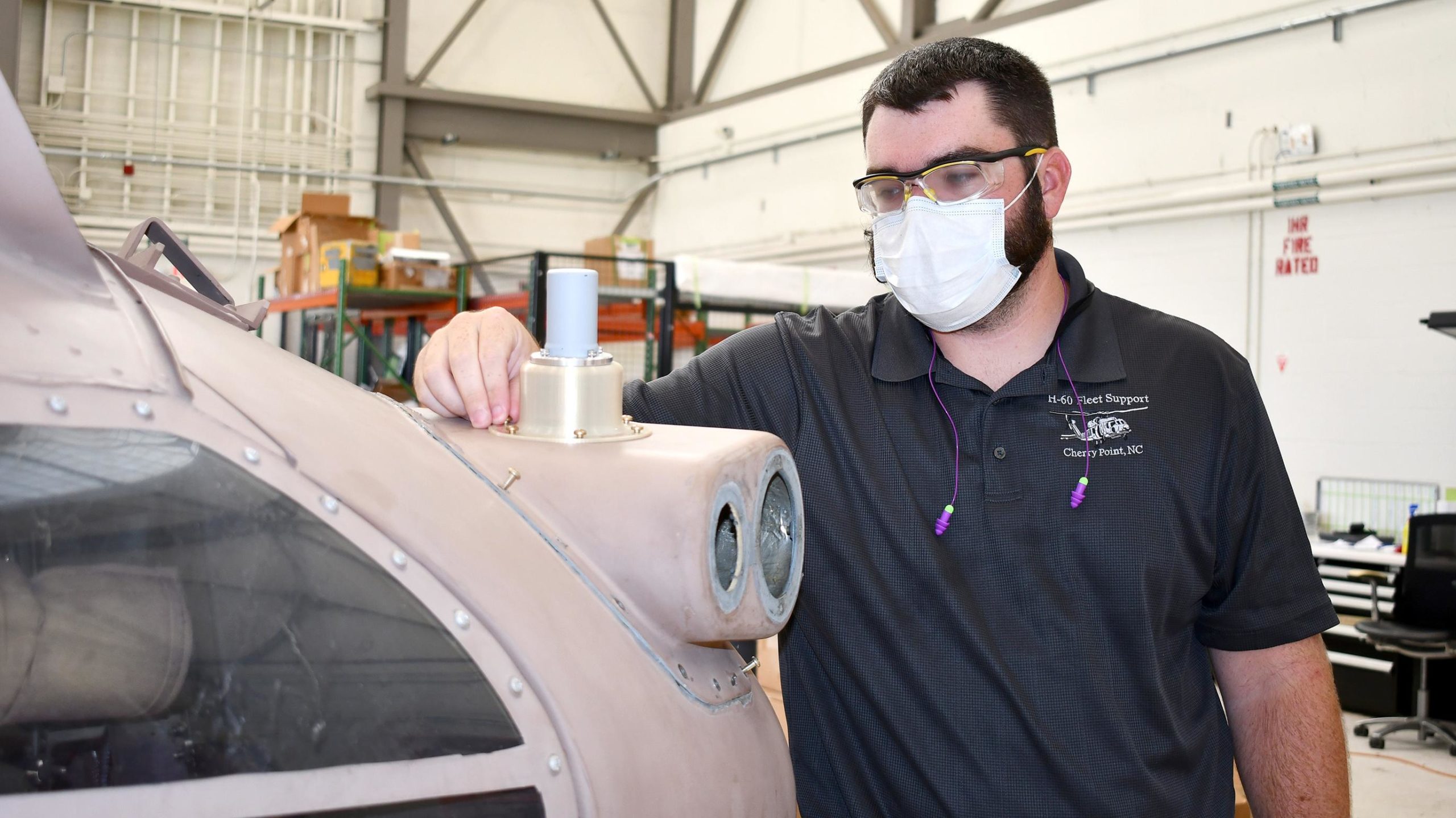With the Navy’s fleet of MH-60S Seahawk helicopters set for a communications system upgrade, engineers at the H-60 Fleet Support Team have adopted 3D printing for the project.
Specifically, over 200 units of the multi-mission aircraft will be receiving new Full Motion Video (FMV) systems to extend their operational capabilities. To secure the new systems to the Seahawks, structural and avionics engineers at the Fleet Readiness Center East (FRCE) prototyped a mounting assembly which includes two 3D printed antenna mounts. The mounts were developed with the help of the additive manufacturing team at the Naval Air Systems Command (NAVAIR) headquarters in Maryland.
Tommy Stokes, a structures engineer for the FRCE, explains: “The modification consists of three antennas, an equipment rack and a series of electronics mounted to the rack. The [two] 3D printed omnidirectional antenna mounts are getting a lot of attention, because it’s a relatively new technology.”

Time and cost-effective production
Two of the mounts were 3D printed for a number of reasons. First of all, the antennae they will be supporting are relatively light, meaning the mounts will not experience significant structural loads or stresses. Seeing as 3D printed components tend to lack in the strength department when compared to more traditional methods, the lighter loads meant this wasn’t a deal breaker.
More importantly, additive manufacturing provided the most time and cost-effective route to production – this was especially important given the tight deadlines delivered by the program office. Other methods such as a traditional composite layup were explored, but the lead times and costs associated with developing a mold were simply too high, even with plans to mass produce over 200 components.

The structures team was the one to design the parts and integration plan, as well as contracting the manufacturing of the mounts. The avionics team, however, has been working to maintain the project’s technical directive and installation data packages. Before any production took place, the FRCE engineers sought advice from technical area experts in structures, 3D printing, composites, and even electromagnetic environmental effects.
With the design virtually finalized, the 3D printed mounts and the rest of the FMV are now in the early evaluation stages to ensure everything fits together as intended. Following this, the assembly will be validated on a fleet aircraft and a final verification of the technical directive will be performed.
Chad King, an avionics engineer with the FRCE, adds: “As avionics, we’ll be responsible for testing the functionality of the system once it’s been installed on a fleet aircraft. We’ll also be responsible for generating all of the organizational-level maintenance procedures and periodic maintenance requirements for the system.”

Additive manufacturing in the armed forces
The U.S. military is no stranger to additive manufacturing and its benefits by this point. Earlier this year, engineers from the Oklahoma City Air Logistics Complex became the first to successfully test a 3D printed metal component inside a U.S. Air Force aircraft engine. The part in question, an anti-ice gasket, was fitted in a TF33-P103 engine, which powers aircraft such as the B-52 Stratofortress.
Elsewhere, the Air Force Life Cycle Management Center’s B-2 Program Office also recently decided to 3D print protective components for the B-2 Spirit, aka the Stealth Bomber. The permanent protective cover is to be secured over the airframe mounted accessory drive (AMAD) decouple switch located in the cockpit of the aircraft.
The 4th annual 3D Printing Industry Awards are coming up in November 2020 and we need a trophy. To be in with a chance of winning a brand new Craftbot Flow IDEX XL 3D printer, enter the MyMiniFactory trophy design competition here. We’re happy to accept submissions until the 30th of September 2020.
Subscribe to the 3D Printing Industry newsletter for the latest news in additive manufacturing. You can also stay connected by following us on Twitter and liking us on Facebook.
Looking for a career in additive manufacturing? Visit 3D Printing Jobs for a selection of roles in the industry.
Featured image shows the U.S. Navy’s MH-60S Seahawk helicopter. Photo via US Navy.


